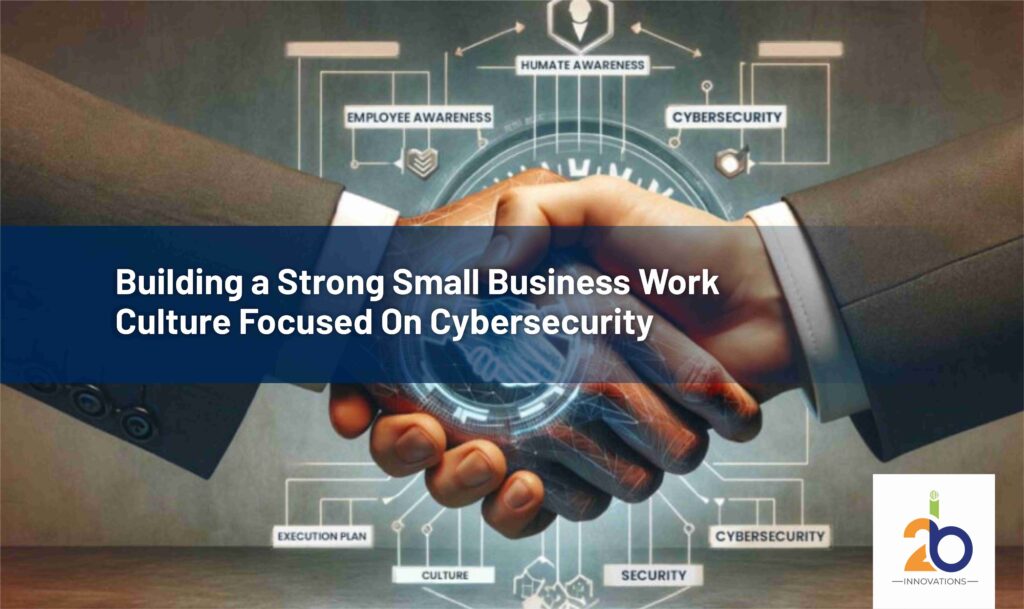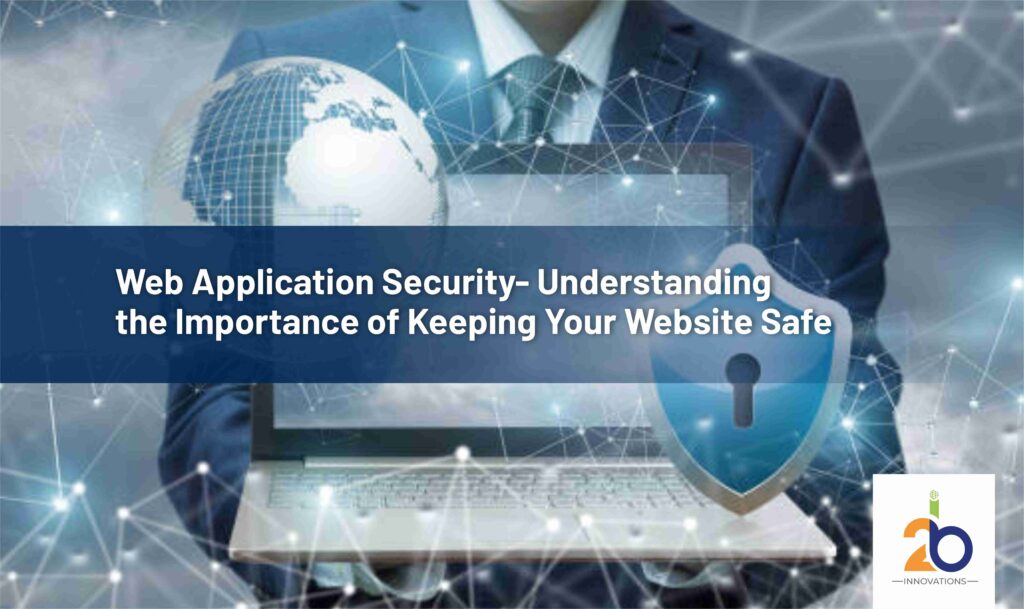
There are many things that small business owners need to think about, but cybersecurity should always be at the top of the list.
Why? According to the Allianz Risk Barometer, cyber events will be the biggest business risk in 2022. They are more dangerous than insufficient skilled workers, problems caused by the pandemic, and natural disasters.
You might have often noticed that some well-reputed brands, multinational companies, organizations, and public institutions are in the top headlines due to data breaches and cyber threats. Nevertheless, small institutions are also at risk of such attacks.
A report from a Cybercrime study by Accenture found that hackers target 43% of small businesses. Of these, 14% of companies that experienced losses were properly protected.
Cybercriminals are always coming up with new ways to attack, so your business must keep up with their investments in digital security. Protective software and an IT manager aren’t enough to keep those investments safe; they will also need constant attention, training, and upkeep.
For small companies to be safe from cyber threats, everyone working there must understand and support cybersecurity as part of the workplace culture. Going to work at your small business every day and following best practices in detecting and restricting cybercrime must go hand in hand. Let’s talk about how to get that done!
Check out your business’s cybersecurity needs.
A thorough analysis of your present situation and requirements is recommended before committing to new systems or starting new projects.
Start by listing what cybersecurity means for your business and the threats you might face. You should hire a hacking expert to do a health check to speed up the process.
Some examples of personal customer information that spyware could use are whether you offer delivery services or ways to pay online. For salespeople, sensitive information about how to score leads and analyze competitors might be leaked out.
Take some time to carefully look at every part of your business and ask yourself some important questions:
- What are the risks that we are facing right now?
- What effects has hacking had on us so far? What other actions could or should we have taken?
- What are the assets that are most at risk?
- What digital items, data, or restricted access could be in danger? Which of those tools might cybercriminals want to use?
- What would each person on our small business team need to do to help with cybersecurity?
- What time, people, and software do we already have to fight cybercrime, and how well are we utilizing them? How can we do better?
For budding entrepreneurs, you will better understand the importance of cybersecurity for your small businesses or startups once you get the answers to the questions mentioned above. It will help you set better goals for your business in the future.
Offer regular training and resources for cybersecurity.
Your strategies and plans to establish a secured cybersecurity program will effectively work once you have a clear one-on-one conversation with your workers. Your employees better understand the risks and threats and what to look for.
Set rules and regulations for managing common cyberattacks like phishing emails, malware, and stolen passwords, and ensure that everyone who works for your small business is familiar with them.
Brief your workers about the tools that help them improve cybersecurity and how to use them. Follow best cybersecurity practices to stay safe online, such as how to avoid downloading suspicious files, using login tools, and browsing the web safely.
Businesses these days need more advanced security processes, such as SSL certificates. Your employees should be well versed about checking the website’s state first on what they are working on.
For example, putting HTTPS at the start of a website’s URL can let your workers know the site is safe. Even ensuring that our ways of communicating are safe has become increasingly important. Reliability is one of the most important things to look for in VoIP companies.
Keeping your business safe online will take a long-term, multifaceted effort. There needs to be more than one training or workshop.
Your business will become more vulnerable as it grows. Additionally, cyber threats will keep growing and changing. So, watch for new threats and make sure your workers are always informed and ready.
Set good standards for cybersecurity.
Once you’ve found the best cybersecurity tools and practices and trained your staff on them, you’ll need to figure out how to incorporate them into your organization’s daily operations.
Follow these simple steps to set good standards for cybersecurity-
Consistency
A simple way to achieve consistency is to ensure that every employee of the chain practices all the security practices efficiently.
Everyone who works for your company should see that these safety steps are taken seriously by everyone else, especially those in charge or executive positions. It can help make sure that the requirements for safety are met.
Keep an eye on the progress.
Everyone who works for your company should see that these safety steps are taken seriously by everyone else, especially those in charge or executive positions. It can help make sure that the requirements for safety are met.
Set goals for the whole company to improve security. It could mean reducing the number of events each month or keeping a streak of days or weeks without any security breaches.
Then, talk about ways that you can all keep track of your progress. For example, Best Notion widgets are great for sharing your work toward these goals in fun ways. You can include a chart in company or department notes that shows how security has improved from one month to the next.
You could also go crazy and make a funny GIF related to a cybersecurity rule for your company’s communication route.
You can help your “employees” remember the safest things to do when it matters most by creating creative ways to keep this problem in their minds.
Work Culture & Discipline
Some businesses also use a system of rewards and punishments to encourage people to follow privacy rules.
To create a mindset of cybersecurity, though, every person in your company needs to know how important these safeguards are and be willing to follow them. It can be done by working together to learn.
No matter what happens after an event, you must discuss it with your team. Talk about what went well and what might have been done better.
Be willing to talk about your cybersecurity problems and share your wins with them. Remember that teaching principles are a better way to get great results than fear or threats.
Secure your Business computer systems.
To meet the expectations of a well-advanced and effective cybersecurity work culture in your business, ensure that all your systems are well protected.
You can help make this happen by planning how to keep the software your business uses up to date with patches and fixes. When you can, use automatic updates, and make sure you have a plan for when you need to make changes by hand.
If you’re hiring people to work from home, ensure they have the right safety software on their personal and work devices. Think about what tools and space you need as well.
If you are running an application on a website, then a Web Application Firewall is important. In such cases, the applications are prone to threats like cross-site scripting (XSS), SQL injection, and cookie poisoning, which can cause problems in the future. Web Application Firewall is necessary in such cases.
If you store private and confidential data and information on your devices but need more time and resources to manage the server and IT equipment you need, switch to a colocation data center. This way, you and your employees won’t have to worry about taking care of the equipment. Instead, you can focus on finding the safest ways to access and send private data.
Think a step ahead for Cyber security breaches.
Being a small business owner with a well-established safety culture as part of your process, you still might be at risk of threats.
Make a thorough plan for how your business will handle each type of possible incident, such as a breach, data loss, or service outage. Ensure that the right people on your team know what they need to do in each action plan. You should be ready to change these plans as your business grows and its needs change.
Drills with your workers are a good way to test and review your incident response plans. It could mean a “tabletop” activity where you and your group discuss possible dangerous situations and how to handle them.
You can also fake threats like phishing emails or people you don’t know trying to get into protected equipment.
Write down what worked and what didn’t after each answer. You should use a team collaboration tool for your group talks and simulations. Plus, for example, has many apps and add-ons that can help you organize and share this data in interesting ways.
Use this information to keep improving the security measures your company uses.
Setting up a culture of cybersecurity at work takes time.
No matter how you feel about it, hacks are a daily risk today. You don’t need to be afraid, though.
Everyone in your company needs to work together to get ready to deal with cybersecurity threats well. The following things can help you make that happen at work:
- Asking important questions about the security needs of your business
- Coming up with the best ways to deal with threats and the tools your team will need to do so
- Giving your employees training on how to use those tools
- Choosing to work in a way that values safety
- Picking the best ways to keep your systems safe
- Making plans to get better over time
Take the time and effort to follow these steps. Your peace of mind will thank you many times over. That gives you more time and freedom to focus on developing your business, reaching your goals, and making your business bigger.
Best of luck with your small business!



